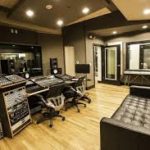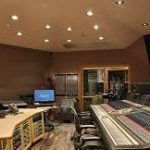







High-definition audio and digital audio have revolutionized the way we experience sound, offering a level of clarity, detail, and fidelity that was previously unattainable. Let’s dive deep into these technologies and explore their specifications, costs, noise considerations, and the tools used for analysis.
High-Definition Audio:
High-definition audio, also known as HD Audio or Lossless Audio, is a term used to describe audio formats that offer significantly higher quality than traditional audio formats like MP3 or CD audio. These formats are designed to capture and reproduce sound with greater accuracy, preserving the full dynamic range and nuances of the original recording.
Specifications:
1. Bit Depth: High-definition audio formats typically use a bit depth of 24 bits or higher, compared to 16 bits for CD audio. A higher bit depth allows for a greater dynamic range, capturing more subtle details and preventing quantization noise.
2. Sampling Rate: HD Audio formats support sampling rates of 96 kHz or higher, compared to 44.1 kHz for CD audio. A higher sampling rate captures a broader frequency range, resulting in more accurate reproduction of high-frequency sounds.
3. Channel Support: Many HD Audio formats support multichannel audio configurations, such as 5.1 or 7.1 surround sound, providing an immersive audio experience.
4. Lossless Compression: Formats like FLAC, ALAC, and WMA Lossless use lossless compression techniques, ensuring that no audio data is lost during compression and decompression, preserving the original audio quality.
Cost and Noise Considerations:
1. Storage and Bandwidth: High-definition audio files are larger in size compared to compressed formats like MP3, requiring more storage space and higher bandwidth for streaming or downloading.
2. Hardware Requirements: To fully appreciate the benefits of HD Audio, specialized hardware such as high-quality digital-to-analog converters (DACs), amplifiers, and speakers or headphones may be required, increasing the overall cost.
3. Noise Floor: With a higher dynamic range and lower noise floor, HD Audio formats are less susceptible to quantization noise and other forms of digital distortion, resulting in a cleaner, more transparent sound.
Digital Audio:
Digital audio refers to the representation of sound waves as a sequence of binary values, allowing for precise storage, manipulation, and reproduction of audio signals. This technology has revolutionized the way audio is recorded, processed, and distributed.
Specifications:
1. Sampling: Digital audio is created by sampling an analog audio signal at regular intervals, capturing its amplitude at specific points in time. The sampling rate determines the highest frequency that can be accurately represented.
2. Quantization: The amplitude values of the sampled audio signal are quantized, meaning they are assigned discrete numerical values within a specific range. The bit depth determines the number of possible quantization levels and, consequently, the dynamic range and potential noise level.
3. Encoding: The quantized audio samples are then encoded into a digital format, such as Pulse-Code Modulation (PCM) or various compressed formats like MP3, AAC, or Ogg Vorbis.
Cost and Noise Considerations:
1. Storage and Bandwidth: Uncompressed digital audio (e.g., PCM) requires significant storage space and bandwidth, while compressed formats like MP3 trade off audio quality for reduced file sizes.
2. Hardware Requirements: Digital audio systems require specialized hardware such as analog-to-digital converters (ADCs), digital signal processors (DSPs), and digital-to-analog converters (DACs) for recording, processing, and playback.
3. Quantization Noise: Due to the quantization process, digital audio can introduce quantization noise, which is a form of distortion caused by the rounding of amplitude values. Higher bit depths and dithering techniques help mitigate this noise.
Analysis Tools:
To analyze and evaluate the quality of high-definition and digital audio signals, various tools and techniques are employed:
1. Waveform Monitor: A waveform monitor displays the amplitude of an audio signal over time, allowing for visual inspection of the signal’s shape, levels, and potential distortions or clipping.
2. Audio Analyzer: Audio analyzers are specialized instruments that measure various aspects of audio signals, including frequency response, noise levels, distortion, and dynamic range. They provide detailed quantitative data for assessing audio quality.
3. Spectrum Analyzer: A spectrum analyzer is a tool that displays the frequency content of an audio signal, showing the amplitude or power of different frequency components. This analysis is crucial for identifying noise or unwanted frequencies that may degrade audio quality.
4. Listening Tests: Ultimately, critical listening tests by trained audio professionals are essential for subjectively evaluating the perceived audio quality, revealing nuances that may not be apparent from objective measurements alone.
By leveraging high-definition audio and digital audio technologies, along with advanced analysis tools, audio professionals can create, process, and deliver audio experiences with unparalleled clarity, detail, and fidelity, pushing the boundaries of what is possible in the realm of sound reproduction.

High Definition Digital Audio Measurements
High Definition Digital Audio refers to audio signals that exceed the quality of standard definition audio, typically offering higher sampling rates and bit depths. These improvements result in a wider frequency range and greater dynamic range, providing a more accurate and immersive listening experience. To understand and evaluate high definition digital audio, several key measurements and units are used.
Sampling Rate is a fundamental measurement in digital audio, expressed in Hertz (Hz) or kilohertz (kHz). It represents the number of samples taken per second when converting an analog signal to digital. Standard CD-quality audio uses a sampling rate of 44.1 kHz, while high definition audio often employs higher rates such as 96 kHz or 192 kHz. These higher sampling rates allow for the capture of higher frequencies, potentially extending beyond the range of human hearing (typically 20 Hz to 20 kHz). For example, a 192 kHz sampling rate can theoretically reproduce frequencies up to 96 kHz, though the practical benefits of such high frequencies are debated among audio professionals.
Bit Depth is another crucial measurement, expressed in bits. It determines the number of possible amplitude values that can be assigned to each sample, directly affecting the dynamic range and potential signal-to-noise ratio of the audio. Standard CD-quality audio uses 16-bit depth, allowing for 65,536 possible amplitude levels. High definition audio often uses 24-bit depth, providing 16,777,216 possible levels. This increase in bit depth translates to a theoretical dynamic range improvement from about 96 dB for 16-bit audio to approximately 144 dB for 24-bit audio. In practical terms, this means 24-bit audio can capture more subtle variations in volume and potentially reduce quantization noise.
Signal-to-Noise Ratio (SNR) is a critical measurement in audio quality, expressed in decibels (dB). It compares the level of the desired signal to the level of background noise. In digital systems, this is closely related to the bit depth. For instance, 16-bit audio has a theoretical maximum SNR of about 98 dB, while 24-bit audio can achieve up to 144 dB. However, real-world performance often falls short of these theoretical maximums due to various factors in the audio chain.
Total Harmonic Distortion plus Noise (THD+N) is another important measurement, typically expressed as a percentage or in decibels. It quantifies the amount of undesired harmonics and noise in a signal relative to the fundamental frequency. Lower THD+N values indicate cleaner, more accurate audio reproduction. High-quality digital audio systems might achieve THD+N values below 0.001% or -100 dB, though exact values can vary depending on the specific equipment and measurement conditions.
Frequency Response is a measure of how evenly a system reproduces different frequencies, usually expressed as a range with a tolerance in decibels, such as 20 Hz – 20 kHz ±0.1 dB. For high definition audio, the frequency response might extend beyond the audible range, potentially reaching 40 kHz or higher. However, the importance of such extended frequency response is a subject of ongoing debate in the audio community.
Dynamic Range, measured in decibels, represents the ratio between the loudest and quietest sounds a system can reproduce. In digital audio, this is directly related to the bit depth. A 16-bit system has a theoretical dynamic range of about 96 dB, while a 24-bit system can achieve up to 144 dB. Real-world dynamic range is often lower due to various system limitations.
Jitter is a timing-related measurement, typically expressed in picoseconds (ps) or nanoseconds (ns). It refers to short-term variations in the timing of digital signals, which can introduce distortion in the audio. High-quality digital audio systems strive for very low jitter, often below 1 ns or even in the picosecond range.
Intermodulation Distortion (IMD) is another form of distortion measurement, usually expressed as a percentage or in decibels. It quantifies the introduction of new frequencies created by the interaction of two or more signals. Like THD+N, lower values indicate better performance, with high-quality systems often achieving IMD below 0.001% or -100 dB.
Crosstalk, measured in decibels, represents the amount of signal leakage between channels in a multi-channel audio system. Lower crosstalk values indicate better channel separation. High-quality digital audio systems might achieve crosstalk values below -90 dB or even -100 dB at 1 kHz.
These measurements provide a comprehensive view of digital audio quality, allowing for objective comparisons between different systems and formats. However, it’s important to note that while these technical measurements are crucial, they don’t always directly correlate with perceived audio quality. Subjective listening tests remain an important part of evaluating audio systems, as human perception can be influenced by factors beyond these measurable attributes.
In the realm of high definition digital audio, advancements continue to push the boundaries of these measurements. However, the pursuit of ever-higher numbers must be balanced against the limitations of human hearing and the law of diminishing returns. As technology progresses, the focus increasingly shifts to how these technical improvements translate into real-world listening experiences and whether they provide meaningful benefits to end-users.
